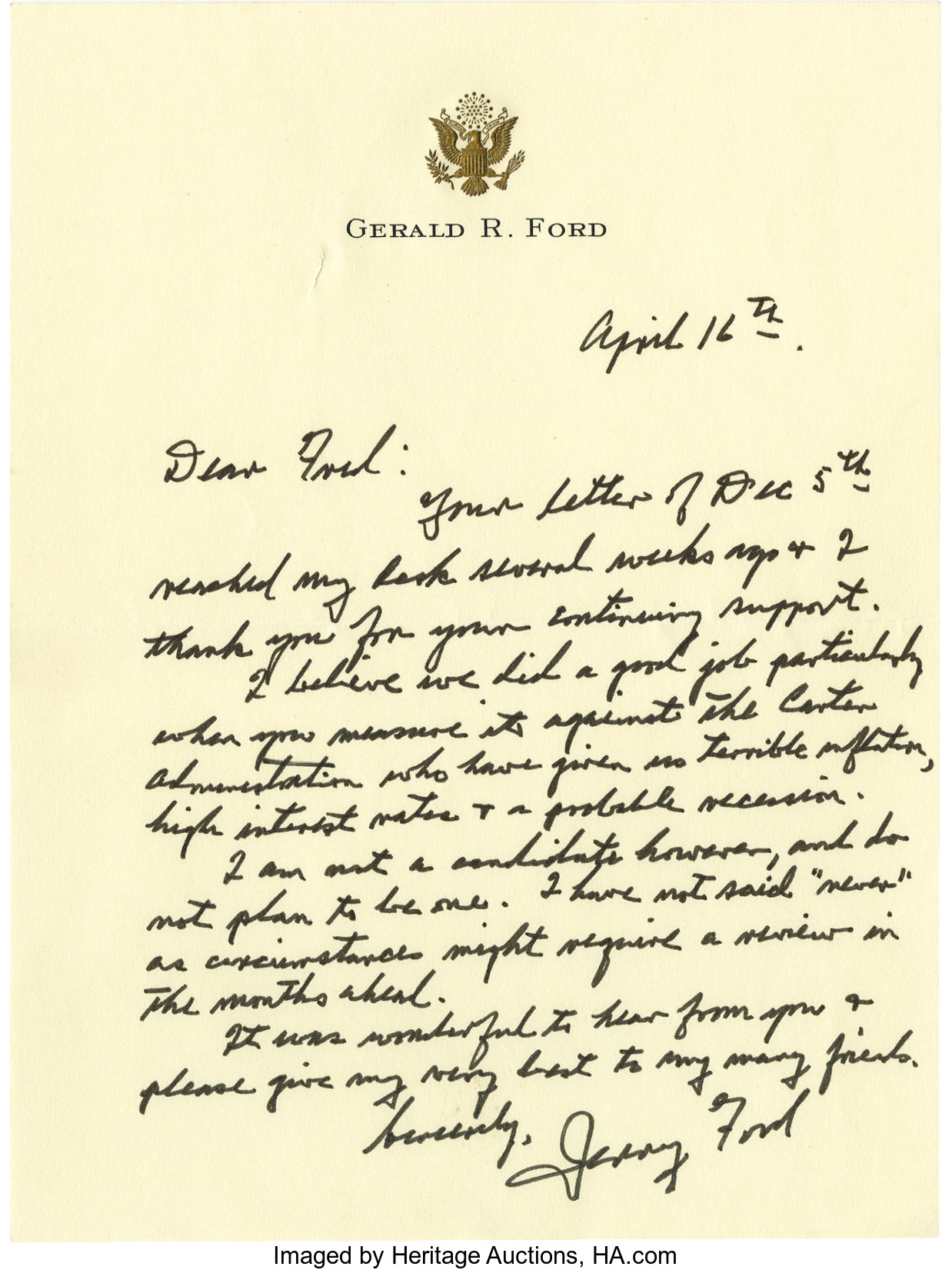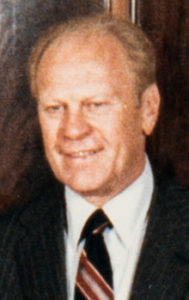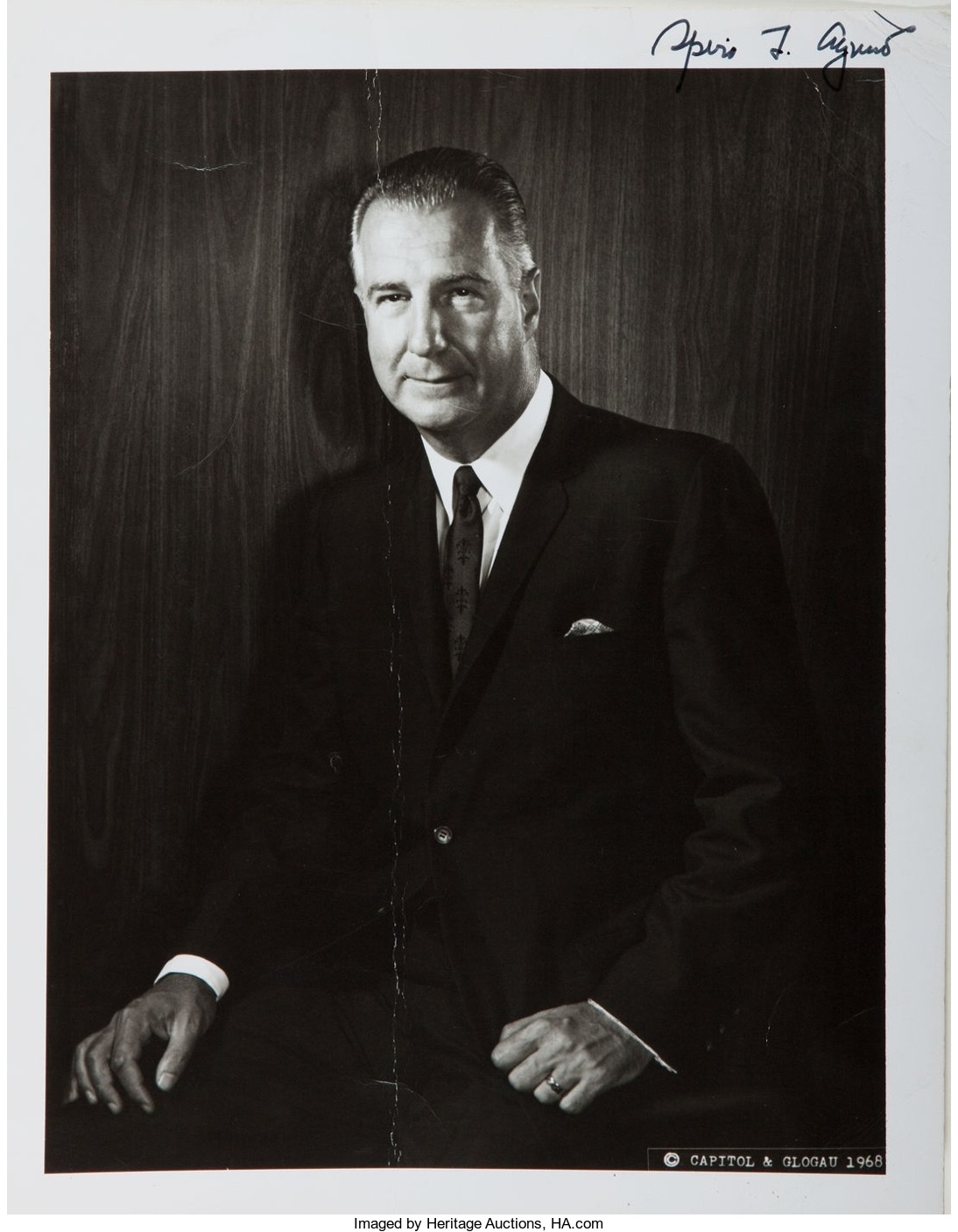
By Jim O’Neal
Gerald Rudolph Ford (Leslie Lynch King Jr. at birth) was an uncomplicated man tapped by destiny for one of the most complex jobs in history. The first non-elected president and first vice president confirmed by the Senate, he was tasked with healing the nation’s wounds caused by the Vietnam War and the severe divisions resulting from the Watergate scandal. Atypical from the usual driven personalities in the Oval Office, Ford restored calm and confidence to a nation while ushering in a period of renewal for American society.
A year before his inauguration, it would never have occurred to Ford (1913-2006) that he would be thrust into the presidency. The highest office he ever aspired to was Speaker of the House of Representatives; and that seemed out of reach because the Democratic Party had a stranglehold in the House. As a result, Ford had decided to retire after the November 1974 elections.

Suddenly, in October 1973, President Richard Nixon appointed him vice president in the wake of Spiro Agnew’s resignation. “Remember, I’m a Ford, not a Lincoln,” he said modestly when he assumed responsibility on Dec. 6, 1973. He was at peace with himself and provided a sense of restored purpose, blissfully unaware of the collapsing presidency and seemingly endless revelations of misconduct at high levels in the administration.
One bright spot was that even as it approached dissolution, the Nixon administration managed to navigate the Arab-Israeli War of 1973 and diminish the Soviet position in the Middle East by successfully sponsoring a complicated triangular diplomacy with Moscow and Beijing. The disintegration of executive power did not lead to a collapse of our international position. Nixon’s prestige after five years of foreign policy now came close to a policy of bluffing, but the sleight of hand grew more difficult and it was unsustainable.
As impeachment proceedings gathered momentum, Nixon’s personal conduct began to mirror his political decline. He kept abreast of policy issues and made key decisions, but Watergate absorbed more of Nixon’s intellectual and emotional capital. Routine business became more trivialized by the increasingly apparent inevitability of his downfall. His tragedy was largely self-inflicted and the only question was, “How long can this go on?”
Then on July 31, it was revealed that one of the tapes the Supreme Court ordered to be turned over to the Special Prosecutor was the long-sought “smoking gun”— conclusive proof of Nixon’s participation in the cover-up. On the tape, Nixon was clearly heard instructing Chief of Staff H.R. Haldeman to use the CIA to thwart an FBI investigation into the Watergate burglary.
With the tape’s release, Ford took the unprecedented step on Aug. 6 of disassociating from the president at a Cabinet meeting. He would no longer defend the president and said he would not have done so earlier had he known. Publically, he maintained silence as a “party in interest” (probably another first).
But it was the morning of Aug. 9, 1974, that witnessed one of the most dramatic moments in American history. At 9:30 in the East Room, Richard Nixon bade farewell to his staff. At 12:03 that same day, in the same room, Gerald R. Ford was sworn in as the 38th president of the United States.
Earlier, General Alexander Haig had handed Nixon’s formal resignation to Henry Kissinger in his role as Secretary of State. All presidential appointments are countersigned by the Secretary of State and, by the same token, resignations of a president and vice president are made to the Secretary of State as well. With the resignation of Spiro Agnew on Oct. 10, 1973, and Richard Nixon as president on Aug. 9, 1974, Kissinger achieved what we must hope will remain the permanent record for receiving high-level resignations … forever!
Our long national nightmare had finally come to an end.
 Intelligent Collector blogger JIM O’NEAL is an avid collector and history buff. He is president and CEO of Frito-Lay International [retired] and earlier served as chair and CEO of PepsiCo Restaurants International [KFC Pizza Hut and Taco Bell].
Intelligent Collector blogger JIM O’NEAL is an avid collector and history buff. He is president and CEO of Frito-Lay International [retired] and earlier served as chair and CEO of PepsiCo Restaurants International [KFC Pizza Hut and Taco Bell].

